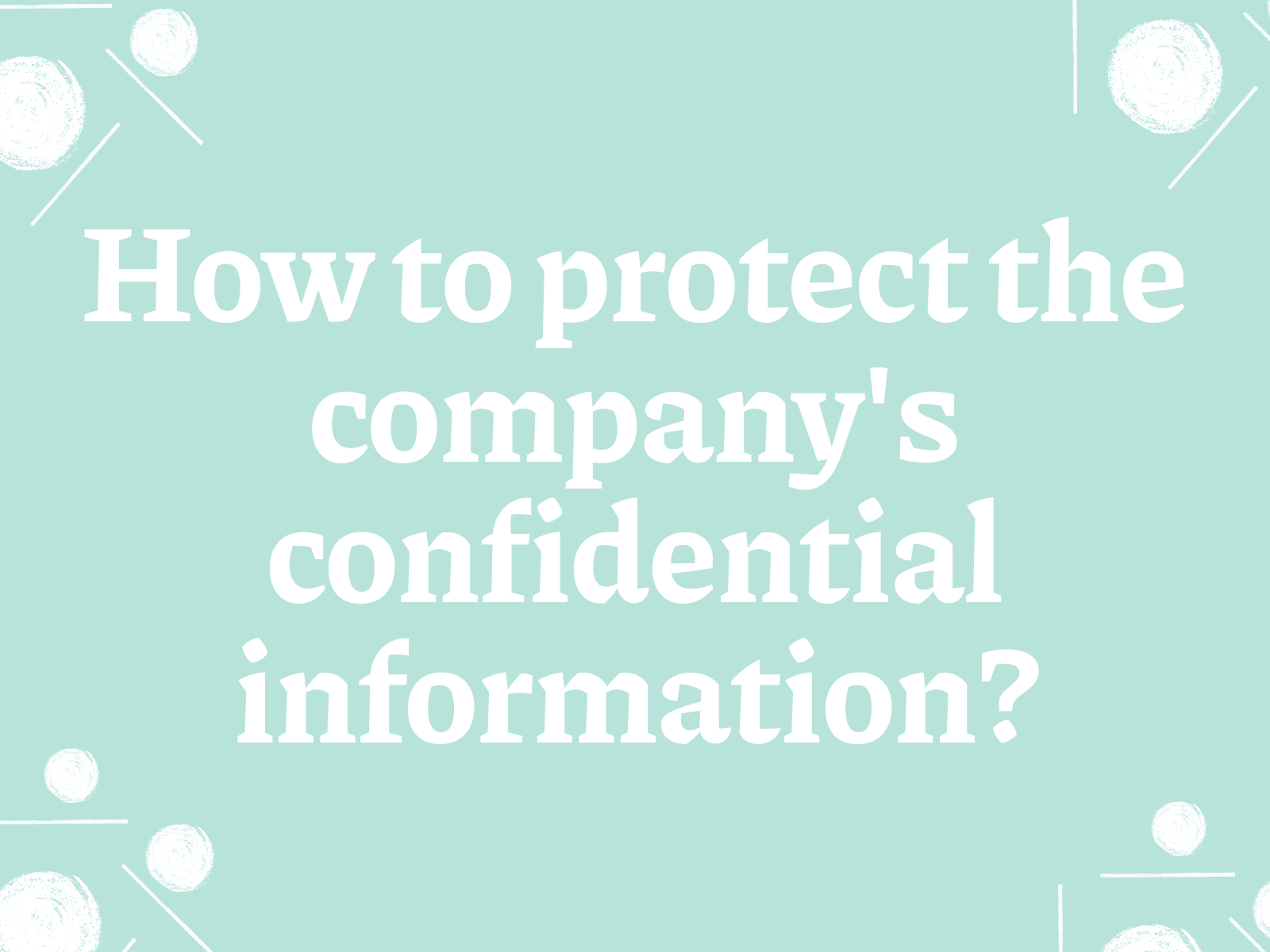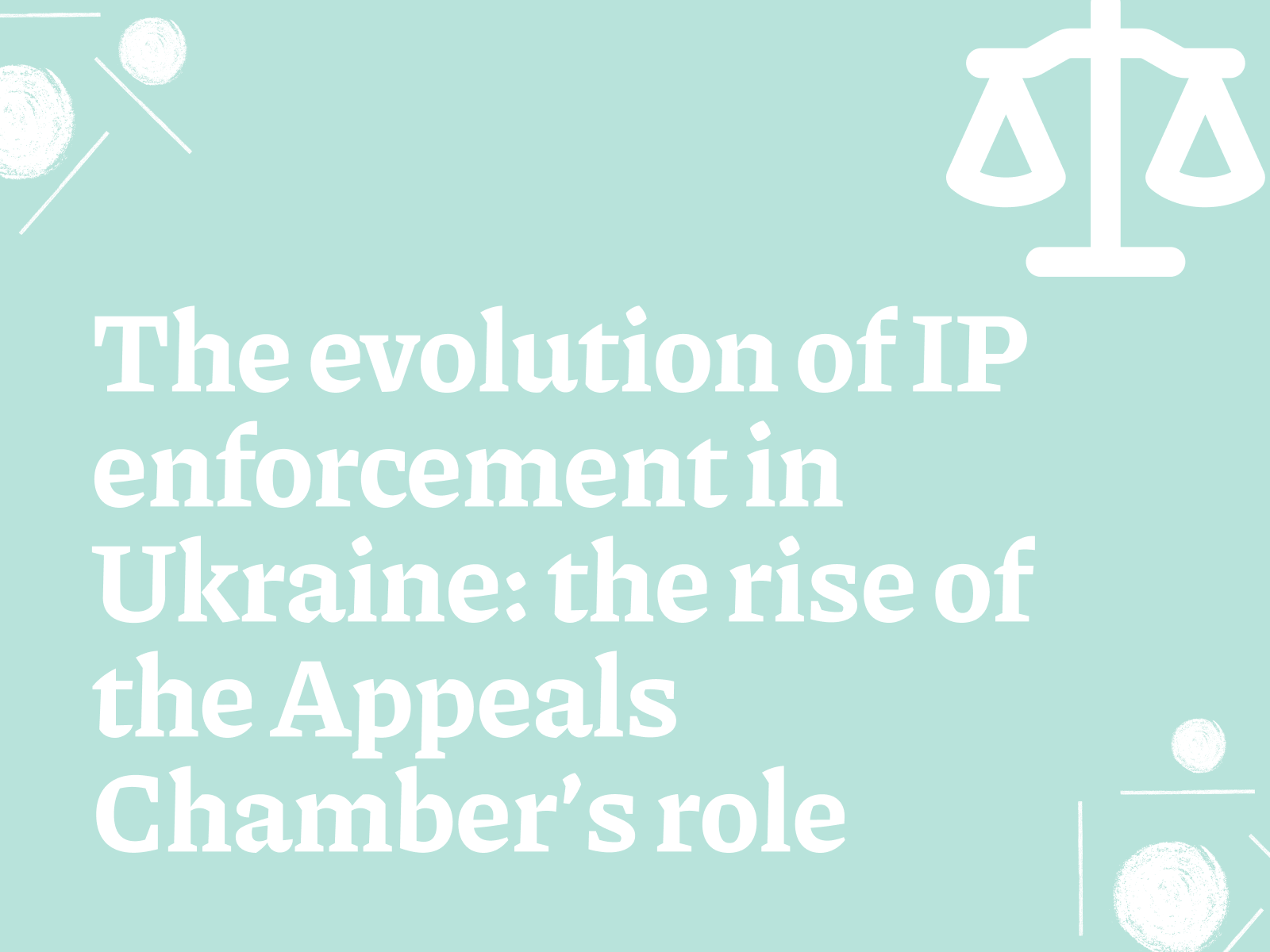In today’s information society, confidential information is one of the most valuable assets of a company. Trade secrets, know-how, customer databases, marketing strategies – all of these form the basis of competitive advantage and successful business development. That is why protecting information and intellectual property is of critical importance to any organisation, regardless of its size or industry.
A trade secret leak can lead to catastrophic consequences, including loss of profits, reputation damage, reduced competitiveness and even bankruptcy. The risks of information leakage are increasing with the development of technology, the growing number of cyber-attacks and unfair competition.
In this article, we will look at the main methods of protecting trade secrets, legal aspects of information security and the benefits of obtaining high-quality legal services to ensure reliable protection of confidential information of your company.
What is considered a trade secret?
According to Ukrainian law, a trade secret is information that has commercial value because its use can bring economic benefits or give an advantage over competitors. It is not generally known or readily available to persons who usually deal with this type of information, and its owner takes all necessary measures to protect its confidentiality.
Signs of a trade secret:
- Value:Information has the potential to increase profits, expand the market or improve the company’s position in the competitive environment.
- Non-known: information is not publicly available, i.e. it cannot be obtained from open sources or through legal reverse engineering.
- Trade Secrets Policy:The company takes active measures to protect information, such as restricting access, using passwords, encrypting data and concluding non-disclosure agreements (NDAs).
Examples of information that may constitute a trade secret:
- Production processes and technologies:unique production methods, recipes, formulas, equipment specifications.
- New developments and inventions:new product designs, research data, prototypes, unpatented inventions.
- Customer and supplier databases: customer lists, their contact details, purchase history, relationship features, terms of contracts with suppliers.
- Marketing plans and strategies:market analysis, pricing, advertising campaigns, product promotion plans.
- Financial statements and business plans: financial indicators, investment plans, development strategies, profit and loss forecasts.
- Contract terms and commercial offers:unique terms of cooperation, price offers, discounts, bonuses.
Protecting trade secretsis critical to ensuring the stability and success of a business. It provides the company with the following benefits
- Preserving competitive advantages: Trade secrets allow a company to stand out in the market by offering unique products, services or technologies that are not available to competitors.
- Strengthening reputation:A reliable information security system demonstrates the company’s responsible attitude to its obligations and increases the trust of customers, partners and investors.
- Preventing financial losses:A leak of confidential information can lead to loss of profit, the need to pay compensation, fines and other financial losses.
Given these factors, trade secret protection is an integral part of the strategy of risk management and sustainable business development.
Methods of trade secret protection
To ensure effective protection of trade secrets, a company needs to use a comprehensive approach that combines organisational and legal methods.
Organisational measures:
- Development of a privacy policy and trade secret regulations:These documents define what information is considered confidential, establish rules for handling it and responsibility for their violation.
- Restriction of access to confidential information:Access to commercial secretsshould be granted only to those employees who need it to perform their job duties.
- Use of passwords and data encryption:Protecting electronic information with passwords, encryption and other technical means makes it difficult for unauthorised access to it.
- Document labelling:Documents containing confidential information should be appropriately marked, for example, with the stamp “Trade Secret.”
- Employee training:Regular training and briefings for employees raise their awareness of the importance of trade secret protection and information security rules.
- Access control to the premises:restriction of access to the premises where confidential information is storedand control over the movement of documents and media.
Legal methods:
- Non-disclosure agreements (NDAs):A NDA is an agreement that obliges the parties to keep the information received confidential. Such agreements are concluded with employees, partners, contractors and other persons who have access to the company’s trade secrets.
- Use of technical means of information protection: implementation of access control systems, anti-virus software, intrusion detection systems and other technical means to protect information systems from unauthorised access.
- Monitoring compliance with information security rules:Regular monitoring and auditing of information systems allows you to identify potential threats and take timely action to eliminate them.
- Judicial Protection:In case of disclosure of trade secretsthe company has the right to apply to the court to protect its rights and compensate for damages.
A comprehensive approach to trade secret protection helps to minimise the risks of information leakage and ensure reliable protection of the company’s intellectual property.
Legal support in the field of trade secret protection
Ensuring effective trade secret protection often requires professional legal support. Law Firm Polikarpov Law Firm offers a wide range of quality legal services to protect your company’s information and intellectual property.
Services of Polikarpov Law Firm:
- Drafting and analysis of documents:Our lawyers will help you develop privacy policies, trade secret regulations, non-disclosure agreements (NDAs) and other documents necessary to ensure the protection of information.
- Urgent legal advice: We provide prompt advice on information security, disclosure of trade secrets, protection of intellectual property and other legal aspects.
- Representation of interests in court:In case of litigation related to disclosure of trade secrets or infringement of intellectual property rights, our lawyers will provide professional representation of your interests in court.
- Investigations:If you suspect a leak of confidential information, we will help you conduct an internal investigation and identify the perpetrators.
By contacting Polikarpov Law Firm, you will get a reliable partner in the field of trade secret protection and ensure the stable development of your business.
Conclusion
Protection of trade secrets is an integral part of the successful operation of any company. It ensures that competitive advantages are maintained, strengthens reputation and prevents financial losses. Effective protection of information and intellectual property requires a comprehensive approach that combines organisational and legal methods.
Polikarpov Law Firm offers a wide range of high-quality legal services in the field of trade secret protection. Our experienced lawyers will help you develop an effective information security strategy, prepare the necessary documents and ensure reliable protection of your confidential information.
Contact us today to get professional legal support and ensure the stable development of your business!
What are the practical steps to implement a trade secret regime in a company
Implementing a trade secret regime is a complex process that requires a systematic approach and attention to detail. Here are the main steps to help you ensure that your company’s confidential information is well protected:
- Identification of trade secrets:
- Conduct an information audit:Determine what data is valuable to your company and represents a competitive advantage. It can be technology, know-how, customer databases, marketing strategies, financial information, etc.
- Categorise information:Divide information into categories depending on its level of confidentiality and importance.
- Developing a privacy policy and trade secret regulations:
- Privacy Policy: Describe the general principles of handling confidential information, the rights and obligations of employees, and responsibility for violating the rules.
- Trade Secrets Policy:Detail what information is considered a trade secret in your company, as well as define the procedure for access to it and protection measures.
- Restriction of access to information:
- Set access levels:Determine which employees have access to certain information depending on their job responsibilities and need to know.
- Use technical security measures:Use passwords, encryption, access control systems and other technologies to restrict access to electronic information.
- Control physical access: Restrict access to rooms where confidential information is stored and ensure secure storage of documents and media.
- Conclusion of non-disclosure agreements (NDAs):
- Enter into NDAs with employees, contractors, partners, and others who have access to trade secrets.
- Make sure that the NDA contains clear definitions of trade secrets, non-disclosure obligations of the parties, and liability for breach of the agreement.
- Training and informing staff:
- Conduct regular trainings and briefings for employees on information security and trade secret protection.
- Explain the importance of confidentiality and the consequences of breaching it.
- Monitoring and control:
- Regularly review and update your privacy policy and trade secret regulations.
- Conduct information security audits and identify potential threats.
- Investigate trade secret disclosures and take action to prevent similar incidents in the future.
Implementing a trade secret regime is an ongoing process that requires constant attention and adaptation to changes in the business environment and technology.
By contacting the lawyers of Polikarpov Law Firm, you will receive professional assistance at every stage of the implementation of the trade secret regime and ensure reliable protection of your confidential information.
Is an NDA with employees enough to protect trade secrets
A non-disclosure agreement (NDA) is an important tool for protecting trade secrets, but it is not the only one and not always sufficient. Although the NDA obliges the parties to keep the information received confidential, there are a number of limitations and additional measures that need to be taken into account:
NDA restrictions:
- Malpractice:A NDA cannot completely prevent intentional disclosure, especially if the person has malicious intent or significant financial incentives.
- Complexity of proving a breach:In the event of an information leak, proving a breach of an NDA and the involvement of a specific individual can be difficult and require significant resources.
- Limited validity period:A NDA has a certain validity period, after which the non-disclosure obligations expire.
- Inability to monitor compliance:It is difficult to monitor whether a person really complies with the terms of the NDA and does not disclose confidential information.
Additional measures to enhance protection:
- An integrated approach:An NDA should be part of an overall trade secret protection strategy that includes organisational and technical measures.
- Restriction of access to information: providing access to confidential information only to those persons who really need it to perform their duties.
- Use of technical security measures:use of passwords, encryption, access control systems and other technologies to restrict access to electronic information.
- Document labelling:clearly marking documents containing trade secrets with appropriate stamps.
- Staff training:raising awareness of employees about the importance of protecting trade secrets and the rules for handling confidential information.
- Monitoring and control:regular monitoring of compliance with information security rules and investigation of potential violations.
What technological solutions can help prevent the leakage of confidential information?
Modern technology offers a wide range of solutions to help prevent the leakage of confidential information and ensure that your company’s data is protected. Here are some of them:
- Access control systems (ACS):
- Identification and authentication of users: Access control systems allow you to control access to information systems and data by granting access only to authorised users. The use of multi-factor authentication (MFA) further enhances security by requiring users to provide multiple identification factors (e.g., password and SMS code).
- Differentiation of access rights: ACS allows you to provide different levels of access to information depending on job responsibilities and need to know.
- Data encryption:
- Encrypt data on devices: protect information on computers, laptops, smartphones and other devices with disc encryption software.
- Data encryption in transit: the use of encryption protocols (e.g. HTTPS, TLS/SSL) to protect information in transit over the Internet or other networks.
- Encrypting data in cloud storage: choosing cloud providers that provide data encryption both during storage and transmission.
- Data Loss Prevention (DLP) systems:
- Monitoring and control of data transmission: DLP systems monitor and analyse data transmissions, blocking unauthorised attempts to copy, send or download sensitive information.
- Data classification and labelling: DLP systems automatically classify and label sensitive data, making it easier to identify and control its use.
- Anti-virus software and intrusion detection systems (IDS/IPS):
- Malware protection: anti-virus software and IDS/IPS systems help detect and block viruses, trojans, spyware and other threats that can lead to information leakage.
- Monitoring network activity: IDS/IPS systems monitor network traffic and detect suspicious activity that may indicate attempts to gain unauthorised access to information systems.
- Data backup and recovery systems:
- Regular data backups: backing up important information allows you to restore data in case of loss due to hardware failure, cyberattack or other incidents.
- Keeping backups in a secure location: Keeping backups separate from the primary systems and data to avoid damage or destruction in the event of an incident.
The choice and implementation of technological solutions for information protection depends on the specifics of your company, the level of data confidentiality and budget. Polikarpov Law Firm’s lawyers will help you assess risks, choose the best technological solutions and ensure their effective implementation.
What to do if a trade secret is leaked
A trade secret leak is a serious incident that requires prompt and coordinated action. Here are the main steps to take:
- Recording the fact of disclosure:
- Gather evidence: document all known circumstances of the disclosure, including the date, time, manner of disclosure, who may have been involved, and the extent of the information disclosed.
- Retain event logs: If the disclosure occurred through information systems, retain event logs that may contain important information about the incident.
- Restriction of access to information:
- Isolate the affected systems: If the disclosure occurred through information systems, immediately isolate the affected systems from the network to prevent further information leakage.
- Change passwords and access keys: If you suspect that your credentials have been compromised, immediately change passwords and access keys to the relevant systems and data.
- Conducting an internal investigation:
- Create an investigation team: involve information security experts, lawyers, and other necessary specialists in the investigation.
- Identify the causes of the disclosure: determine how and why the information leak occurred, who was involved in the incident, and what measures should be taken to prevent similar incidents in the future.
- Assess the damage: determine the amount of damage caused to the company as a result of the trade secret disclosure.
- Contacting law enforcement agencies:
- File a crime report: If you suspect a criminal offence (e.g. information theft), file a crime report with law enforcement authorities.
- Cooperate with the investigation: provide investigators with all necessary information and facilitate the investigation.
- Informing the relevant persons:
- Notify information owners: if the information disclosed belongs to third parties (e.g. customers), notify them of the incident and the measures taken.
- Notify regulatory authorities: if the disclosure involves personal data, report the incident to the relevant regulatory authorities (e.g., the Ukrainian Parliament Commissioner for Human Rights).
- Take measures to prevent recurrence of incidents:
- Analyse the results of the investigation: examine the reasons for the disclosure and take steps to address the identified shortcomings.
- Strengthen protection measures: Review and strengthen trade secret protection measures, including organisational, technical and legal methods.
- Raising staff awareness: conduct additional training and briefings for employees on information security and trade secret protection.
The leakage of a trade secret is a serious challenge that requires a professional approach and prompt action. Polikarpov Law Firm’s lawyers will provide you with comprehensive legal support in case of information leakage, help minimise losses and protect the interests of your company.
Is it possible to patent a trade secret? What is the difference between a patent and a trade secret
While patents and trade secrets are both used to protect intellectual property, they have significant differences and are used in different situations:
Patent:
- Public Protection:Information about the invention becomes publicly available after the patent is granted.
- Limited validity:A patent has a limited validity period (usually 20 years), after which the invention passes into the public domain.
- Exclusive Rights:The patent owner has the exclusive right to use the invention and may prohibit others from using, making or selling it without his permission.
- Complexity of obtaining:The process of obtaining a patent can be complex and lengthy, requiring compliance with certain requirements and examination.
Trade secrets:
- Confidentiality: information remains confidential as long as the owner takes measures to protect it.
- Unlimited validity:Trade secrets can be kept for an unlimited period of time as long as they remain confidential and have commercial value.
- Limited Protection:The owner of a trade secret does not have exclusive rights to the information, but may protect it from unlawful acquisition, use or disclosure.
- Flexibility:The trade secret regime is more flexible and less formalised than patenting.
Is it possible to patent a trade secret?
In general, no. Patenting requires disclosure of information about the invention, which is contrary to the principle of confidentiality of trade secrets. However, in some cases, where some of the information about the invention is already publicly available or can be easily obtained by reverse engineering, patenting may be appropriate to protect other aspects of the invention that remain confidential.
Choosing between a patent and a trade secret:
The choice between a patent and a trade secret depends on the specifics of the information to be protected and the company’s business goals.
- Patenting may be appropriate:
- If the invention has significant commercial value and potential for widespread use.
- If it is important to have exclusive rights to use the invention.
- If there is a risk that competitors may develop a similar invention on their own.
- A trade secret regime may be appropriate:
- If the information can be kept confidential for a long time.
- If it is difficult or impossible to obtain a patent.
- If the company does not wish to disclose information about the invention.
The lawyers of Polikarpov Law Firm will help you determine the optimal strategy for protecting your intellectual property, taking into account the specifics of your business and the peculiarities of the information to be protected.
What risks does a company face if it neglects to protect trade secrets?
Neglecting the protection of trade secrets can lead to serious consequences for a company, including:
- Loss of competitive advantage:
- Copying products and technologies:Competitors may copy unique products, technologies or business processes, which will lead to the loss of the company’s uniqueness and market position.
- Entering the market with similar products:Competitors may outperform the company by launching similar products or services using the confidential information received.
- Reduced profitability:Loss of competitive advantage can lead to lower prices, reduced sales, and, as a result, reduced profitability.
- Deterioration of reputation:
- Loss of trust of customers and partners:A confidential information leak can undermine the trust of customers and partners in a company, especially if it concerns their personal data or trade secrets.
- Negative impact on the company’s image:The disclosure of trade secrets can negatively affect the company’s image, creating the impression of its unreliability and inability to protect important information.
- Financial losses:
- Decrease in company value:Loss of competitive advantages and deterioration of reputation can lead to a decrease in the company’s value and investment attractiveness.
- Legal Expenses:A company may face the need to compensate for damages, pay fines or other financial sanctions in the event of a trade secret disclosure.
- Reputation repair costs:A company may need to invest significant resources in repairing its reputation after a data breach.
- Legal liability:
- Civil liability:The company may be civilly liable for disclosing trade secrets to information owners, partners or competitors.
- Criminal liability:In some cases, disclosure of trade secrets may be qualified as a criminal offence, which entails criminal liability.
- Loss of innovation potential:
- Demotivation of employees:An information leak can demotivate employees, especially those involved in research and development, which will lead to a decrease in the company’s innovation potential.
- Reduced investment in R&D:A company may reduce investment in research and development, fearing a leakage of new ideas and technologies.
Protection of trade secrets is an integral part of successful and sustainable business development. Neglecting this aspect can lead to serious negative consequences for the company. The lawyers of Polikarpov Law Firm will help you develop and implement an effective trade secret protection strategy, minimising risks and ensuring the stable development of your business.








